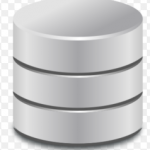 SSD: Solid State Disk drive gaining popularity nowadays. It has a different name as flash memory, SSD, solid state drive, solid state disk.
SSD: Solid State Disk drive gaining popularity nowadays. It has a different name as flash memory, SSD, solid state drive, solid state disk.
1. Overview of SSD Solid State Disk
Why SSD data storage gaining popularity? well, it’s gaining popularity due to few reasons: faster in speed, size of disk, latency, supportability, availability in different forms, random read workload, less power consumption. it has a different name: solid-state disk, solid-state drive, flash memory, SSD.
In different data center roles of a disk is very much important for a few perspectives like speed, random workload, performance, cost, size. And Solid State drive fits all these perspectives. When you talk about data storage, there are different questions that can be in your mind, like how to store our data so that the performance of our application will be drastically increased. The performance will be lightning-fast but few of the factors which you need to consider based on the usages and your requirement.
2.Key points about Solid State Media
Following are the key point about Solid State Media i.e. Solid State Drive (SSD), let us discuss in brief on by one.
- Size: It comes in same shape and size as of HDD
- Supportability/ Availability: : It supports SATA, SAS & FC interface PCI Card / solid state card. It available in form of PCI expansion card
- Cache: It is used in high end storage arrays for level 2 cache
- Mechanical parts: It has no mechanical parts so no seek time, no rotational latency involved. Only total delay which is very low as compared with seek time and rotational delay.
- Performance: It gives excellent performance for random work load
- Latency : more predictable performance as compared to HDD as has no positional latency no mechanical head to move.
- Consumption of Power: requires less power as no mechanical part to move to and fro.
- Cost: it is expensive due to high speed of it.
- Randon Workload: For Random reads SSD gives similar performance as DRAM
3. Different form of Flash memory ( solid state disk)
- NAND flash drive
- NOR Flash drive
Internal implementation of NAND and NOR are different. For more in-depth knowledge , you can read out famous book Data Storage Networking by Nigel Poulton. I really like this book to grasp in-depth knowledge of our data storage. I read out this book during my M. Tech. program and I really enjoyed by reading this.
4. Writing to flash memory
- Initial value: New flash comes with all cells set to 1
- After write: Flash cells can be programmed from one to zero
- To convert to zero to one erase operation is to be performed
- Level of Erase: Erasing can only be done at block level
- First Write: First time write performance is very fast
- If any part of flash memory block has been written all subsequent write to any part will take via read – erase – write operation
5. Caching in SSD
Why caching is being used at any level , in think you know very well , one thumb rule is to improve the performance. So caching in SSD for following reasons:
- to improve the performance
- to extend the life of SSD by Write Coalescing and write combining.
- Write Coalescing: is the process of holding write in cache, until page or block can be written.
- Write combining: When particular LBA (Logical Block Address) written over and over again.
6. Cost of flash memory ( SSD)
One thing, I want to explain here, about cost and price of SSD.
- $/GB cost: $/G cost for Flash is higher thatn $/GB cost for HDD
- $/IO ops: thumb rule says if you choose high IOPS, $/IOPS cost in SSD is less than the $/IOPS cost in HDD. This is little bit tricky, so let us explain by example.
- SSD costing $10,000 provides 25,000 IOPS , so per dollar cost = SSD cost/#IOPS i.e. $ 10000/25000 = $.4 per IOPS.
- HDD capacity with 600GB costing $2,000 provides 200 IOPS , so per dollar I/O cost = disk cost / #IOPS i.e. $ (2000/200) = $10 per IOPS.
- If you need to provide 25000 IOPS, so you need 125 HDD . These drives will require power (electricity), cooling, emission of heat will high so more cooling required and to provide cooling again consume more electricity.
- you can observed carefully, cost of I/O in SSD is less than the HDD.
consumption of electricity will be less in SSD
7. Solid State Drive in Nutshell
Solid state drive is highly performance by comparing of HDD approx 100 x faster that the HDD. per $ i/o cost is lower than the HDD for high i/o network. storage cost per bit is much more higher than the HDD but $ per i/o cost is lower than the HDD.
Thanks for visiting this post for Data Storage Problem solving articles. You can also visit Data Storage Tutorial Listing page for more articles on Data Storage.
Happy Learning 🙂 for data storage: know your SSD solid sate drive.
Your comments are welcome to improve this post. Happy learning about your SDD (Solid Disk Drive).